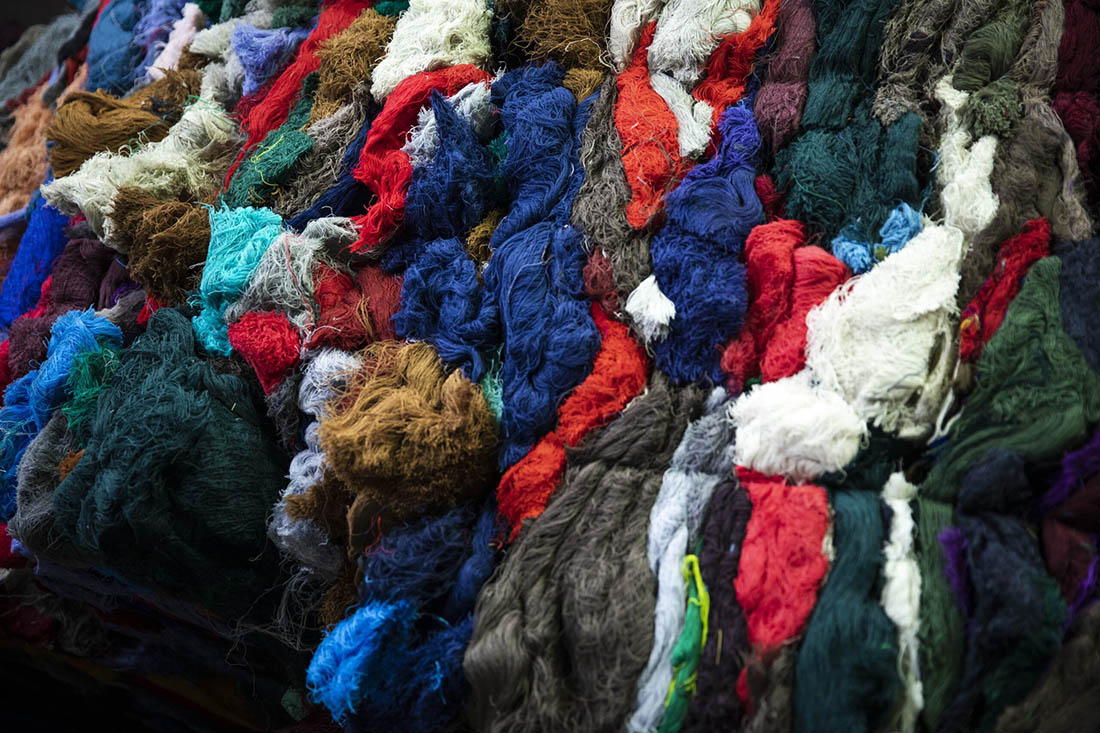More sustainable fibers are needed to feed the growing global demand for textiles and fiber-based materials, according to a leading strategic thinker.
With fibers being used in an increasing range of products and applications, and with accelerated economic growth and prosperity in many countries worldwide, stagnation or even a decline in global fiber consumption remains a remote possibility. If projected growth rates continue, where will the additional 100 to 150 million tonnes of fibers come from, and from what non-fossil feedstocks will they be made?
Over the past 50 years or so, global textile fiber production has increased five-fold from 25 million tonnes in 1970 to 127 million tonnes in 2021 (the latter figure is from The Fiber Year, which includes spunlaid nonwovens).
This equates to a compound annual growth rate (CAGR) of around 3%, which has been mostly driven by population growth, in particular the rise of a more affluent middle class in developing regions, such as China, India, Brazil, Mexico, Turkey, Indonesia and other Southeast-Asian countries – the “Global South,” which are among the world’s most populous economies.
In addition, efficiencies in processing and cost reductions all along the textile chain, from man-made fiber production through to garment making and logistics, has resulted in more affordable clothing for consumers, not to forget the unrelenting march of fast fashion.

At the same time, fibers are increasingly finding their way into more non-apparel applications, such as transport, filtration, construction, protective equipment, agriculture, packaging medical and healthcare, as well as significant and continuous growth in nonwovens and fiber-based composites end-uses.
The question is from where will these additional 100 to 150 million tonnes of fibers come and from what feedstocks are they going to be made?
Growth Trajectory to Continue
Taking all these factors together, Lutz Walter, secretary general of the European Technology Platform for the Future of Textiles and Clothing, predicts that global fiber consumption will remain on its 2 to 3% growth trajectory over the next 25+ years, even if global population growth slows and fashion consumption in the developed countries of the “Global North” gets reined in by sustainability concerns.
Europe may not see any volume growth in fiber consumption owing to virtually zero population growth and a rapidly ageing society in which shrinking consumption of apparel and household textiles may be barely compensated by demand growth for hygiene and medical nonwovens, technical textiles and composites.

North America, with somewhat healthier demographics, but also an increasingly ageing society, will likely see slower than historic fiber consumption growth.
However, the newly developed economies will continue to increase consumption and modernize their cities, infrastructures and services, which will in turn consume increasing amounts of fiber even if population growth rates slow or turn negative, such as in China.
Meanwhile, if the countries with the fastest population growth, mostly in Africa, can improve political stability and economic prosperity, this could mean an additional one to two billion consumers boosting global fiber consumption over the coming decades.
Walter concludes that global textile fiber consumption stagnation or even decline is not likely anytime soon.
A 2% CAGR from current fiber production levels will result in around 215 million tonnes of global production and consumption in 2050; a 3% growth rate will result in 275 million tonnes.
The question is from where will these additional 100 to 150 million tonnes of fibers come and from what feedstocks are they going to be made?
Natural Fiber Limitations
When looking at fiber production trends over the past 20 to 30 years, Walter argues that there is not a lot of potential growth in natural fibers, especially cotton, owing to such issues as soil degradation, water shortages and urban sprawl, which may be difficult to reverse, although low yield and poor cotton farming economics, especially in small-holder dominated growing regions such as India and Sub-Saharan
Africa, could be improved over time.
“Still, seeing global cotton production double by 2050 seems very unlikely,” he said. “Other natural fibers, such as wool, flax, hemp, silk, etc., are so small in the overall picture and have various factors that seriously constrain meaningful growth.
“Hemp may have the best prospects, but developing farming practices, industrial processing capacities plus know-how and end-market demand at the same time is a complex, costly and time-consuming undertaking.”
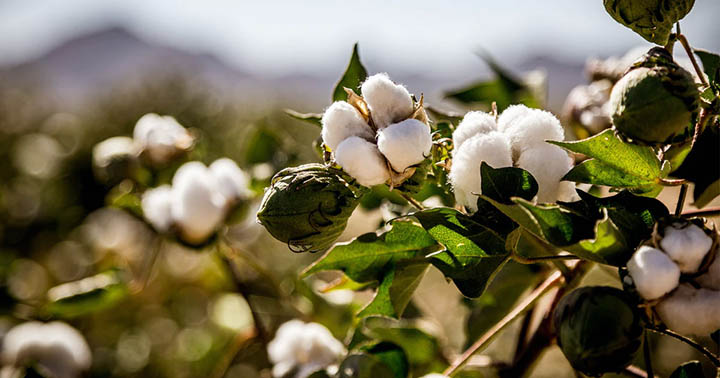
Man-Made Fiber Drawbacks
In comparison, man-made fiber production is easy to scale and as a result man-made fibers have become pre-eminent in recent decades. However, most are made from non-renewable fossil resources, which the world is trying to wean itself off in its effort to fight climate change, said Walter.
“Other problems are related to their properties – most people still prefer cotton, especially for the comfort layer of clothing that is in contact with the skin – and issues related to very slow degradation of most synthetic fibers when they end up in increasing quantities in the form of microplastics in our environment.”
Man-made cellulosic fibers (MMCFs), on the other hand, are like natural fibers in that they are made of a biobased renewable feedstock, typically wood, although in principle any cellulose-rich feedstock can do, even cotton textile waste.
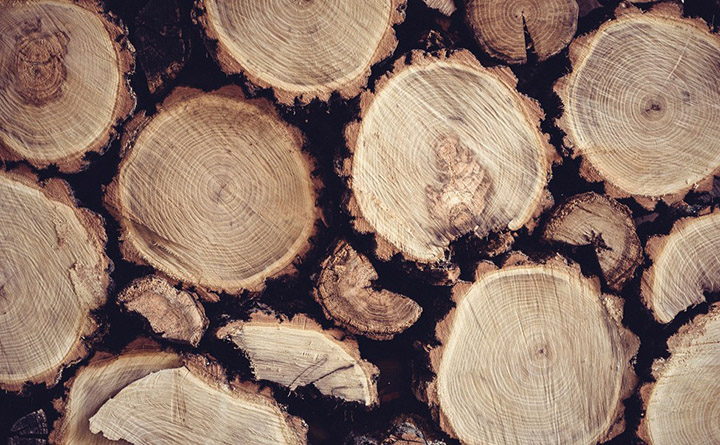
And like synthetics, MMCFs are made in an industrial process that produces a regular fiber at easily scalable industrial efficiency and with low cost. Potential drawbacks include the sustainability of the feedstock sources, such as deforestation, and the footprint and pollution risk of the chemical-heavy production process, especially when the conventional viscose process is applied.
Walter said: “These drawbacks, however, can be overcome and therefore MMCFs are perhaps the highest and most immediate potential fiber type to fill the global demand gap for sustainable textile fibers, especially when in addition to process improvements, fiber properties can also be further enhanced and diversified to better match the fibers they seek to substitute, including cotton.”
Biopolymer-Based Fibers
Beyond MMCFs, many other biopolymer-based fibers from various feedstocks are under development or already in some industrial use, such as fibers made of polylactic acid or biobased polyethylene terephthalate (PET) or polyamide.
Walter argues that these developments should be speeded up. “A broader range of biobased fibers with a wide range of properties and from diverse feedstocks are needed if we want to have any chance of replacing 100% of fossil-based fibers at some future point in time,” he said.
“Like in the case of hemp, these developments are lengthy and risky because feedstock supply, processing and end-market challenges need to be successfully tackled at the same time and the costs of fibers produced initially at smaller scale are not competitive with established commodity fibers.”
Fiber-To-Fiber Recycling Rates
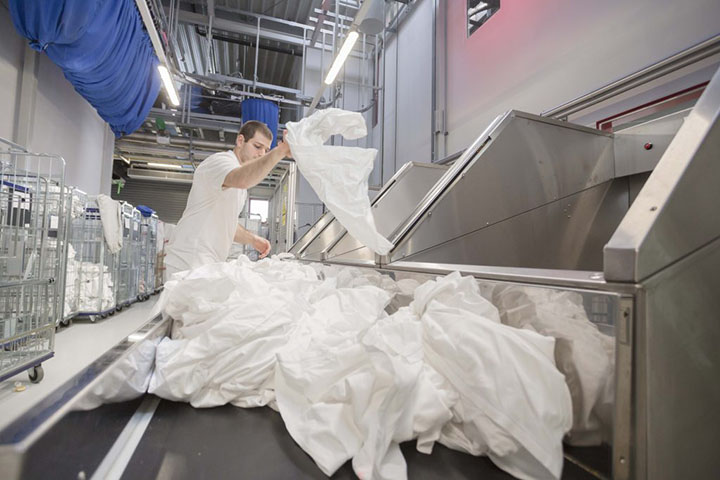
Beyond biobased feedstocks, another principal way of making textile fibers renewable is recycling and carbon dioxide (CO2) capture and feedstock use. However, the problem is that current fiber-to-fiber recycling rates are ridiculously small, said Walter.
The latest estimate from Textile Exchange gives the amount of post-consumer textile-to-textile recycling at 0.6% of total fiber use, which translates into post-consumer content accounting for just 4% of all recycled fibers used by the apparel industry, while the vast majority today is composed of rPET (from recycled PET bottles) together with some recycled industrial and pre-consumer materials.
Walter argues that the true global rate of post-consumer textile-to-textile recycling is much lower, as the figure reported by Textile Exchange is limited to its members, which are skewed towards the more sustainability-engaged European and American brands.
“Significant efforts funded by industry and a wide range of public and private donors are under way, but the runway to large-scale adoption of fiber-to-fiber recycling is long and littered with challenges, from collection and sorting of post-consumer waste and technical and economic hurdles to an uncertain regulatory environment,” he said.
“By 2050 textile-to-textile recycling will surely be a significant contributor to the required renewable fiber supply, but in my opinion neither the dominant nor the most sustainable source.”
CO2 Capture and Feedstock Use
The third and currently still mostly theoretical source of renewable textile fibers is the transformation of captured CO2 into monomers and polymers from which all types of commonly known and used synthetic fibers can be made.
CO2 capture and feedstock use are being pursued by the chemical and other processing industries and is likely to eventually contribute to the range of options to make carbon-based materials, including textile fibers, renewable.
“But again, the road to large-scale adoption is long, and technological and economical challenges, especially the cost and environmental footprint of the energy employed, will have to be overcome,” he said.
“The advantage is that the fibers produced are well known and established, which limits end-use problems. What percentage CO2-based fibers will contribute by 2050 is today completely speculative, but that they can play a meaningful role is entirely plausible.”
A Fully Renewable Fiber Supply
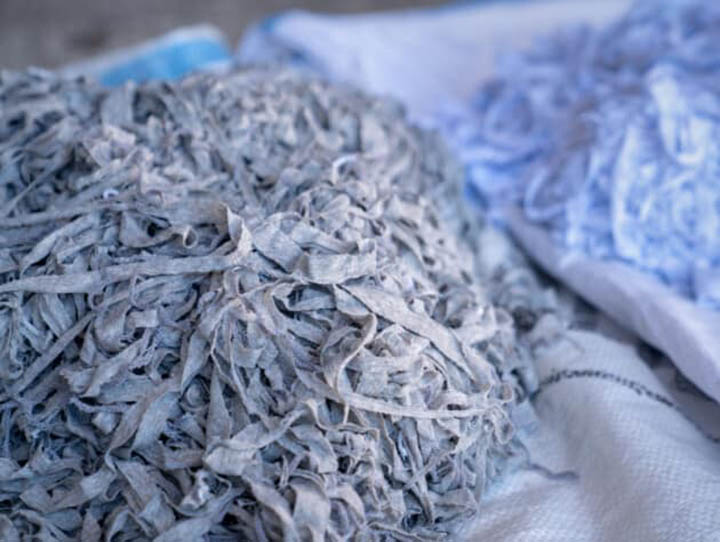
Walter suggests that the textile sector should tap into all three main sources of renewable feedstocks: the biosphere in the form of natural and biopolymer-based fibers, the technosphere for recycled post-consumer materials and the atmosphere for CO2-based fiber feedstocks.
He said: “If I had to guess a likely distribution of a fully renewable fiber supply by 2050, I would give biobased fibers a 50 to 60% share (equally split between natural fibers, MMCFs and other biopolymers), recycled fibers 20 to 30% and CO2-based fibers a 10–20% share.
“This means biobased fibers would have to grow about five-fold from today’s 30 million tonnes to about 150 million tonnes. Recycled and CO2-based fibers would have to jump from basically zero today to 50 to 60 million tonnes and 25 to 30 million tonnes, respectively.
“This cannot happen without a massive global innovation and upscaling effort to make those biobased, recycled and CO2-based fibers at quantities, properties and cost that allow the fossil-to-renewable material transition to happen without shortages, price spikes, industry and end-market disruption.
“If we do not succeed on this path, the petrol-based synthetic fiber production capacities being built today in China, India or the Middle East may well keep running far beyond 2050.
“The growing global need for textile materials will not go away, even if we manage to curb some of its current excesses and inefficiencies of overproduction and overconsumption of cheap and cheerful fashion.
“And we will never be able to recycle our textile material stock over and over again without injecting a significant percentage of virgin fiber material from sustainable sources.”


